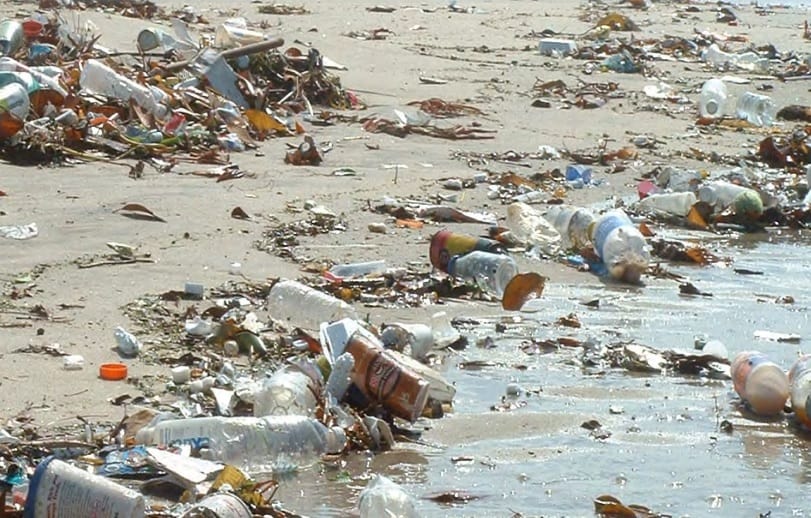USC scientists say their new method breaks down polyethylene plastic into agents used to develop antibiotics, cholesterol drugs and more.
Lab-engineered strains of the fungus Aspergillus niduluns are easy to work with, so it’s often used in pharmaceutical research to discover new drugs. What’s even more intriguing, according to University of Southern California (USC) scientists, is that the fungus thrives on a chemical by-product of recycled polyethylene.
It’s one of the most difficult problems in plastic pollution, but one that also may prove a solution.
“Polyethylene is the least recycled of the large-scale plastics — the Environmental Protection Agency estimates less than 6% is actually recycled — and only 30% of the mass is typically recoverable,” explains Travis Williams, co-author of a study published in the international edition of Angewandte Chemie, a journal of the German Chemical Society.
Williams, a USC chemistry professor, said there’s never been a cost-effective way to recycle the polyethylene found in plastic shopping bags and packaging, among other things. So his USC team started looking at new strategies for chemically altering the polyethylene in useful ways.
Volunteers collected plastic from the harbor at nearby Catalina Island, not far from Los Angeles and a notorious spot in the Great Pacific Garbage Patch. Shopping bags, milk cartons and takeout food containers were then broken down using pressurized oxygen and chemical catalyst agents.
Their process yielded three chemicals called diacids: asperbenzaldehyde, which itself is at the center of some studies on Alzheimer’s disease treatments, alongside citreoviridin (which plays a role in cancer research) as well as mutilin, which can be used to treat against bacteria that have become drug-resistant.
After this first stage, the USC team fed the diacids harvested from recycled plastic to the A. niduluns fungus as a source of carbon. Within just one week, the fungus started producing therapeutic agents: antibiotics, cholesterol-lowering statin compounds, immunosuppressants and antifungals.
“In principle, this method expands the catalogue of products to which polyethylenes can be upcycled to thousands of secondary metabolites,” the paper authors said. It’s all the more promising because the process is relatively simple and avoids complex metabolic engineering techniques.
Essentially, they’ve presented a method to rapidly convert recycled plastic into medically useful agents. “If you look at the biological cycle, that efficiency is very exciting because the process will be cost-sensitive,” said Clay C.C. Wang, a professor at the USC School of Pharmacy and Pharmaceutical Sciences and co-author of the study. “We’re going to make the products in bulk quantities.”
The USC team now plans to work with other researchers at the University of Kansas to investigate whether the method can be applied to other types of plastic. They also want to know about potential applications beyond pharmaceuticals, such as in materials manufacturing.
“The ultimate goal is developing a method that could be used on a mixture of plastics,” Wang said. “Right now, if you go to recycle your plastic waste, there’s only one bin, but there are actually several different classes of plastics. There are systems that sort them, but ideally, we’d like to be able to tackle mixtures of plastics using a similar approach.”
This story first appeared on Sustainability Times
© 2022 Sustainability Times.
This article is licensed under a Creative Commons Attribution-ShareAlike 4.0 SA International License.












